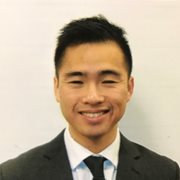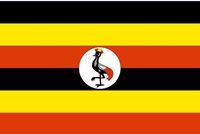Tu Tran
 I just finished my first-year MD at University of Minnesota (UMN). I am grateful to my mentors at UMN, Dr. Sandra Montezuma and Dr. David Boulware, and my mentors at Mbarara University, Dr. Simon Arunga and Dr. Conrad Muzoora, for guiding me on a research agenda focused on ophthalmic diseases in individuals hospitalized for cryptococcal meningitis. I came to Minnesota by way of a MSc in Global Health at Duke Global Health Institute, where, thanks to the inspirational neurosurgery capacity building work of Dr. Michael Haglund, I became involved with research studies at the intersection of surgery and public health in collaboration with Makerere University. One study estimated the burden of surgical conditions in a nationwide survey. This started my ever-growing admiration of Uganda, for many reasons, including contributions to tropical medicine, global health and more recently, non-communicable diseases. Before Duke, I was grateful to work for the University of California Haiti Initiative to train new faculty in Port-au-Prince, which was my first long-term, meaningful experience involving tropical medicine post-undergraduate studies at UC Berkeley. In the long-term, I aim to become a global ophthalmologist.
I just finished my first-year MD at University of Minnesota (UMN). I am grateful to my mentors at UMN, Dr. Sandra Montezuma and Dr. David Boulware, and my mentors at Mbarara University, Dr. Simon Arunga and Dr. Conrad Muzoora, for guiding me on a research agenda focused on ophthalmic diseases in individuals hospitalized for cryptococcal meningitis. I came to Minnesota by way of a MSc in Global Health at Duke Global Health Institute, where, thanks to the inspirational neurosurgery capacity building work of Dr. Michael Haglund, I became involved with research studies at the intersection of surgery and public health in collaboration with Makerere University. One study estimated the burden of surgical conditions in a nationwide survey. This started my ever-growing admiration of Uganda, for many reasons, including contributions to tropical medicine, global health and more recently, non-communicable diseases. Before Duke, I was grateful to work for the University of California Haiti Initiative to train new faculty in Port-au-Prince, which was my first long-term, meaningful experience involving tropical medicine post-undergraduate studies at UC Berkeley. In the long-term, I aim to become a global ophthalmologist.
 Project: "Piloting a mobile Health (mHealth) platform to expand access to and increase early intervention rates for ocular diseases in Mbarara: a prevalence survey and feasibility study"
Project: "Piloting a mobile Health (mHealth) platform to expand access to and increase early intervention rates for ocular diseases in Mbarara: a prevalence survey and feasibility study"
June 28, 2017 - August 25, 2017
Uganda
What does the Kean Fellowship mean to you?
The financial support of the Kean Fellowship enables me to focus my energies on fundraising for project-related expenses, such as purchasing equipment and paying staff. I do not have to worry about my personal expenses, and this could impact me in ways I wish not to imagine, such as 100 percent avoidance of using boda boda (motorbike) rides to save money on personal transportation expenses. When I am in Mbarara, Uganda, I can focus on collecting data and setting up a self-sustaining system that will continue after I return to the U.S. The Kean Fellowship is a ticket to me physically immersing myself in an unparalleled setting of the Mbarara Regional Referral Hospital. Without spending the 10 weeks on the ground, I would not be able to do the heavy lifting required to get our study initiated, albeit it is nested within a much larger clinical trial.
What do you anticipate learning?
Clinically, I am keen to learn how to treat systemic conditions, such as CMV infection, that have ophthalmic manifestations in a low-resourced setting. I am eager to observe and potentially contribute to management of cryptococcal meningitis patients. I will absorb as much as I can in regards to ophthalmology practice at Mbarara University and Regional Hospital Eye Centre, especially treatment of posterior segment diseases, which are becoming more prevalent in these settings.
On a service delivery level, I anticipate learning how to integrate smartphone ophthalmoscopy/teleophthalmology into existing screening and treatment paradigms. At least I will begin to understand pitfalls and how to address adaptation problems at the point-of-care, while informing the technical innovation process as well.
Finally, I anticipate learning what it means to practice the art of healing, at least vicariously, through Ugandan physicians as they deal with the seemingly insurmountable challenges of wholly treating severely ill AIDS patients — which means dealing with significant compromises to vision among other long-term complications.
What interests you about tropical medicine and what problems are you interested in solving?
AIDS-defining diseases such as cryptococcal meningitis are rarely ever seen any more in high-income countries in the post-ART era. In low- and middle-income countries (LMICs), AIDS-defining illnesses are becoming rarer yet still prevalent. Many of these patients have visual problems that have not been well studied. The collaboration among Makerere, Mbarara Universities and University of Minnesota have led to interventions that improve survival among these patients. I am eager to help expand upon this foundation and see if ophthalmic care can be provided to help these individuals recover a vital function, thus improving quality of life. With the advent of low-cost, smartphone-based ophthalmoscopes, we may be able to setup new teleophthalmology systems to bridge a shortage of ophthalmologists. This can potentially aid rolling out improved eye care in the in-patient settings and introducing fundus imaging integrated with HIV/AIDS prevention and treatment strategies for early detection of ophthalmic diseases potentiated by HIV infection.